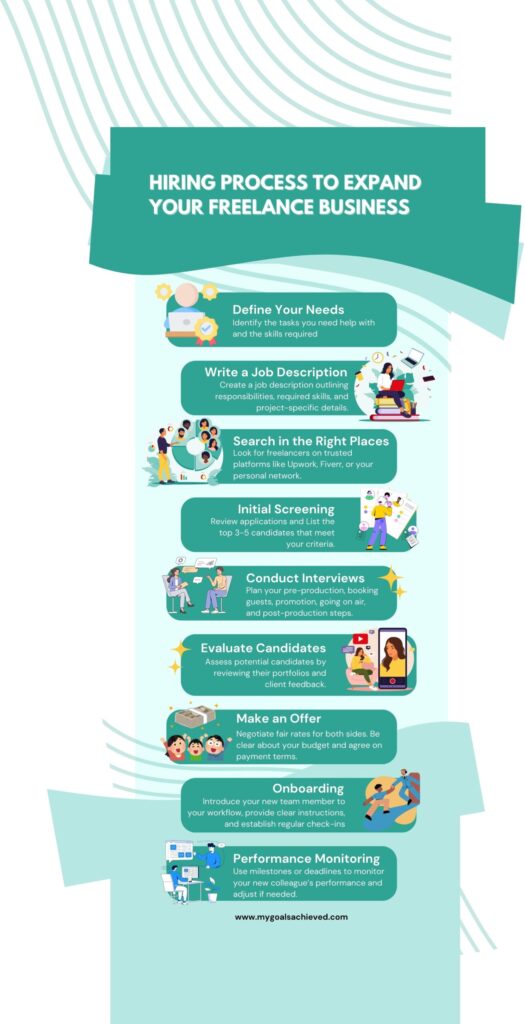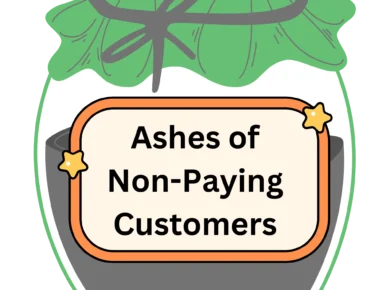When Should You Consider Hiring Help for Your Freelance Business?
Scaling a freelance business means expanding to handle more work and revenue without sacrificing quality or client satisfaction. As you manage clients effectively and meet their expectations, demand may outgrow your solo capacity. This growth could lead to diversifying services, hiring subcontractors, or adopting tools to boost productivity. Scaling requires careful planning to maintain the personal touch that clients value. It’s essential to bring on new team members who align with your standards, and that’s where an effective hiring process plays a key role.
Are You Ready to Scale?
Before expanding, it’s crucial to assess your readiness. Premature growth can stretch resources thin and hurt service quality. Key signs that you’re ready to scale include:
- Consistent Workload: A steady stream of projects exceeding your capacity.
- Financial Stability: A reliable client base and revenue that can support growth.
- Market Opportunities: Clear growth opportunities that align with your skills and goals.
- Operational Efficiency: Streamlined processes that maximize productivity.
These factors indicate you’re prepared to expand and meet growing demand without sacrificing quality.
The first crucial step in expanding your freelance business is bringing new team members on board. Let’s explore the most effective hiring process to ensure you find the right talent to support your growth.
Hiring Process
When hiring a freelancer to join your team, having a clear and structured process is key to ensuring you find the right fit. Here’s a streamlined hiring process you can follow, broken down into stages:
1. Define Your Requirements
- Clarify the Scope: Write down the tasks you need the new colleague to handle, including the necessary skills and tools. Be clear on whether the project is short-term or long-term.
- Set Clear Expectations: Include details on deliverables, deadlines, hours required, communication expectations, and budget.
- Decide on Payment Structure: Determine if you’ll pay hourly, per project, or based on milestones.
2. Create a Job Description
- Write a Concise Job Posting: Include the role’s key responsibilities, required skills, and any special qualifications or certifications.
- Highlight Key Benefits: If there are flexibility, learning opportunities, or other perks, mention these to attract quality candidates.
3. Candidate Sourcing
- Post on Freelance Platforms: Platforms like Upwork, Freelancer, or specialized forums in your field are great places to find candidates.
- Leverage Your Network: Reach out to your professional network or ask for recommendations from trusted contacts.
- Social Media and LinkedIn: Announce the opening on your LinkedIn profile or relevant groups, which can help spread the word to potential candidates.
4. Initial Screening
- Review Applications: Look for alignment between their past projects and what you need. Prioritize candidates with experience directly related to your needs.
- Shortlist Candidates: List the top 3-5 candidates that meet your criteria based on their portfolio, work history, and skills.
5. Interview Process
- Conduct Interviews: Have a structured interview using key questions. Assess communication skills, professionalism, and how well they align with your work culture.
- Test Their Skills (Optional): You can ask candidates to complete a small, paid, or free test project to evaluate their real-world performance under the conditions they will be working in.
Related article

Job interview Questions for Hiring a Freelancer
Discover essential tips on defining project scope and deliverables, ensuring clear communication, and preventing scope creep for project success and client satisfaction.
6. Evaluation
- Compare Candidates: Look at their skills, experience, communication style, and test project results. Don’t overlook the human factor—personality matters. Even the most skilled expert can make things difficult if they’re not a good fit for your working style.
- Check References (Optional): Contact previous clients for feedback on how well they worked with the freelancer.
7. Make an Offer
- Send an Offer Letter: Outline key terms of the project, including payment structure, deliverables, deadlines, and any important details discussed during the interview.
- Sign a Contract: Protect both parties with a clear contract that includes payment terms, confidentiality agreements (if applicable), and a detailed project scope.
8. Onboarding
- Introduce Them to Your Workflow: Share any tools, project management systems, or communication channels you use (PlanArty, Slack, Trello, etc.).
- Provide Clear Instructions: Set them up for success by clearly defining the first tasks, timelines, and expectations.
- Establish Regular Check-ins: Set a time for regular updates or check-ins to make sure the project stays on track.
9. Performance Monitoring
- Track Progress: Use milestones or deadlines to monitor your new colleague’s performance and adjust if needed.
- Offer Feedback: After completing the first task or milestone, give constructive feedback to ensure alignment moving forward.
Key Considerations
- Communication is Critical: Ensure the freelancer is someone you can easily communicate with, especially if working remotely.
- Start Small: If you’re uncertain, start with a smaller project to test their fit before committing to larger ones.
- Keep a Reserve List: Even if you hire one person, keep the profiles of other strong candidates for future projects.
Conclusion
Expanding your freelance business is an exciting step, but it requires careful planning and strategic decision-making. Hiring the right team members is crucial to ensuring your business can grow without compromising the quality of your work or client satisfaction. By assessing your readiness to scale, following a structured hiring process, and prioritizing skills and personality, you can build a strong, cohesive team supporting your long-term goals. Remember, growth is not just about increasing capacity—it’s about doing so in a way that maintains the core values and personalized service that made your freelance business successful in the first place.







